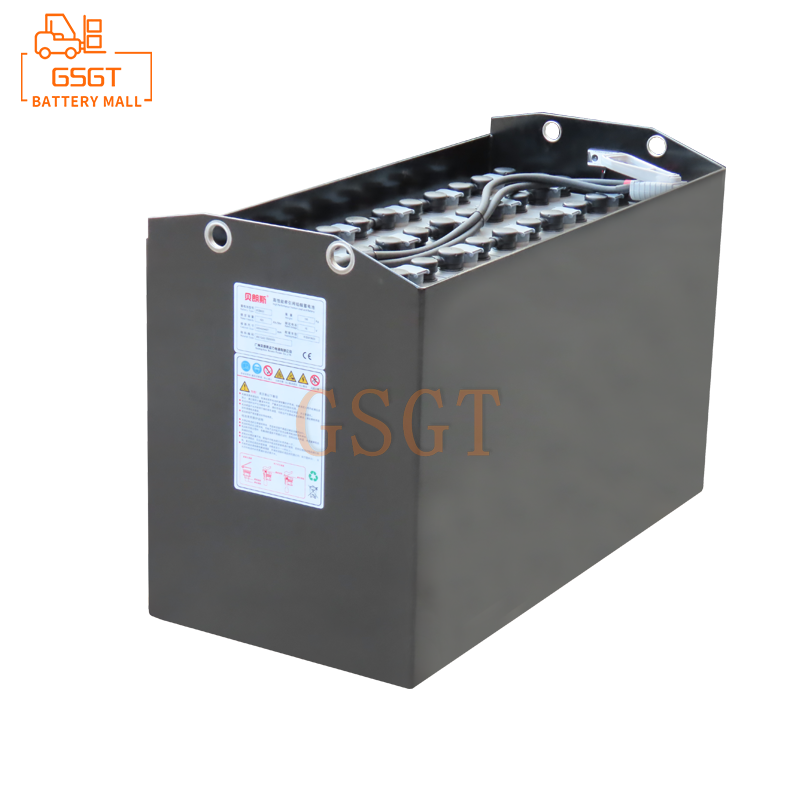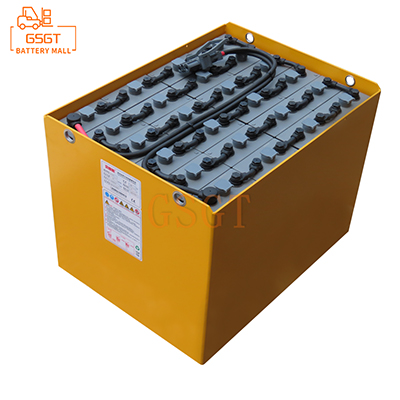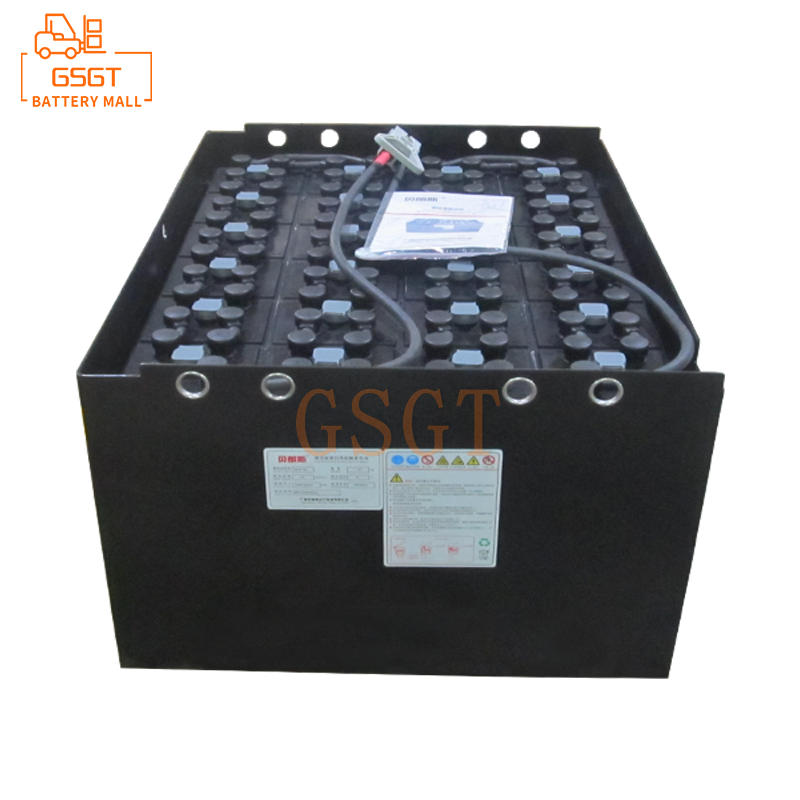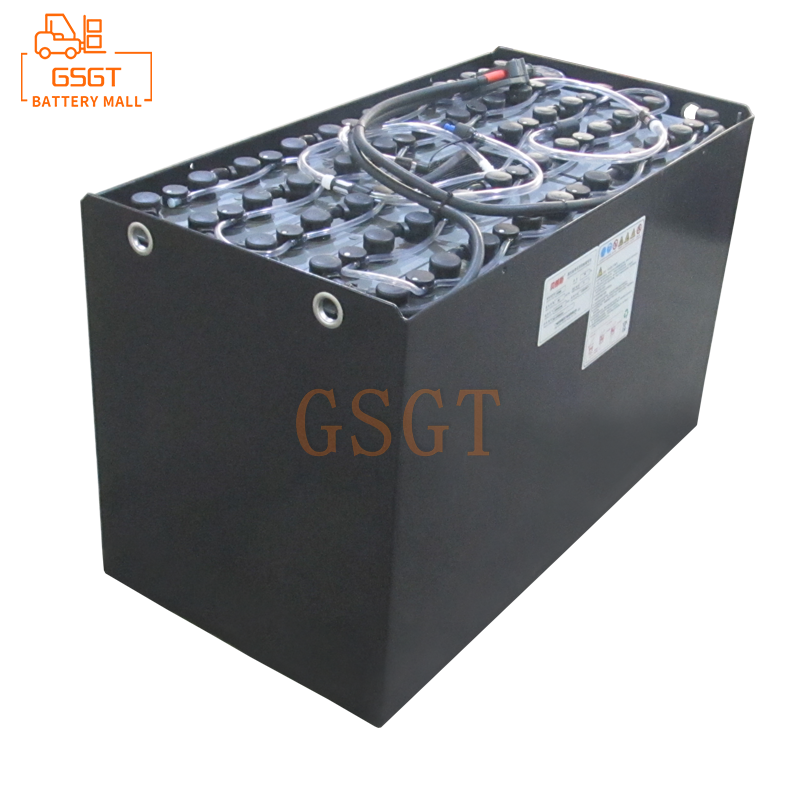Time:2025-04-30 11:17:44
Browse:607
Abstract
This article conducts an in-depth discussion on the quality control and testing standards of lead-acid batteries for forklifts. The key links for the quality control of forklift lead-acid batteries were elaborated in detail, including the selection of raw materials, the control of production processes, and the management of production environments, etc. Meanwhile, a comprehensive review of its testing standards has been conducted, covering aspects such as performance testing, safety testing, and environmental protection testing. It aims to provide references for forklift lead-acid battery manufacturing enterprises to improve product quality and standardize production processes, and promote the healthy development of the forklift lead-acid battery industry.
1. Introduction
Forklifts, as indispensable equipment in modern logistics and warehousing fields, mainly rely on lead-acid batteries for power. The quality of lead-acid batteries directly affects the working performance, endurance and service life of forklifts. High-quality lead-acid batteries can ensure the efficient and stable operation of forklifts and reduce maintenance costs. Conversely, it may lead to insufficient power of the forklift, frequent malfunctions, and even cause safety accidents. Therefore, it is of vital importance to strictly control the quality of lead-acid batteries in forklifts and follow scientific testing standards.
2. Quality Control of Lead-Acid Batteries for Forklifts
(1) Selection of Raw Materials
1. ** Lead and Its alloys ** : Lead is one of the main raw materials for lead-acid batteries, and its purity has a crucial impact on the performance of the batteries. High-purity lead can reduce the interference of impurities on the internal chemical reactions of batteries, and improve the charging and discharging efficiency and stability of batteries. The purity of lead is generally required to be no less than 99.9%. Meanwhile, the composition of lead alloys also needs to be precisely controlled. For instance, adding appropriate amounts of antimony, calcium, tin and other elements to lead can improve its mechanical and electrochemical properties. Different proportions of alloy composition will affect the self-discharge rate, corrosion resistance and grid strength of the battery, etc.
2. ** Sulfuric acid ** : Sulfuric acid is the main component of the electrolyte in lead-acid batteries, and its quality directly affects the chemical reaction efficiency of the battery. Sulfuric acid should be selected as chemically pure or analytical pure products that meet national standards, and its concentration and impurity content need to be strictly controlled. An appropriate concentration of sulfuric acid can ensure the normal progress of chemical reactions inside the battery, and improve the battery's capacity and charging and discharging performance. At the same time, it is necessary to avoid the presence of metal impurities such as iron and copper in sulfuric acid, as these impurities will accelerate the self-discharge of the battery and shorten its lifespan.
3. ** Separator ** : The function of the separator is to prevent short circuits between the positive and negative plates, while allowing ions to pass through to ensure the smooth progress of electrochemical reactions inside the battery. High-quality partitions should have good chemical stability, high mechanical strength and appropriate pore size structure. Common partition materials include microporous rubber partitions and microporous plastic partitions, etc. When choosing a separator, it is necessary to select the appropriate material and specification based on the battery's usage requirements and performance characteristics to ensure that the separator can effectively isolate the positive and negative plates without affecting the battery's charging and discharging performance.
(2) Production Process Control
1. ** Plate Manufacturing ** : Plates are the core components of lead-acid batteries, and their manufacturing process has a significant impact on battery performance. The manufacturing of plates involves multiple steps such as pasting, curing and drying. During the paste application process, the formula and coating thickness of the lead paste need to be precisely controlled. The rationality of the lead paste formula directly affects the content and performance of the active substances on the plates, while the coating thickness is related to the capacity and service life of the plates. The curing and drying processes must strictly control parameters such as temperature, humidity and time to ensure that the plates form a stable structure and have good electrochemical performance.
2. ** Battery Assembly ** : The battery assembly process requires strict process specifications. The matching of the plates should be reasonably carried out based on parameters such as the capacity and voltage of the plates to ensure the consistency of the battery pack's performance. During the assembly process, it is necessary to ensure that the installation positions of components such as plates, separators, and electrolytes are accurate and the connections are firm. At the same time, it is necessary to pay attention to controlling the injection volume of the electrolyte. Too much or too little will affect the performance and lifespan of the battery. In addition, the sealing of the battery casing is also a crucial step in the assembly process. Good sealing can prevent the leakage of the electrolyte, ensuring the safety and service life of the battery.
3. ** Formation Process ** : Formation is the process of converting the active substances on the plates into substances with electrochemical activity, and it is an important process in the production of lead-acid batteries. The formation process includes the setting of parameters such as the charging system and temperature control. A reasonable charging system can fully activate the active substances on the plates, improving the capacity and performance of the battery. During the formation process, the temperature must be strictly controlled to prevent abnormal chemical reactions inside the battery due to excessively high temperatures, which could affect the battery quality.
(3) Production Environment Management
1. Temperature and Humidity Control: The temperature and humidity in the production workshop have a significant impact on the production process of lead-acid batteries. Both excessively high and low temperatures can affect the curing, drying of lead paste and the formation of batteries and other process links. Generally speaking, the temperature in the production workshop should be controlled at 20 to 30 degrees Celsius, and the humidity at 40% to 60% is appropriate. A stable temperature and humidity environment can ensure the stability of the production process and improve product quality.
2. ** Cleanliness Management ** : The cleanliness of the production environment directly affects the quality of batteries. Dust, impurities and other substances in the air entering the battery can lead to increased self-discharge, performance decline and even short circuit of the battery. Therefore, the production workshop should maintain a good level of cleanliness and be regularly cleaned and dusted. At the same time, effective dust prevention measures should be taken, such as installing air purification equipment and having personnel wear dust-proof clothing, shoes and hats, etc., to prevent external impurities from entering the production area.
3. ** Safety Management ** : The production process of lead-acid batteries involves harmful substances such as lead and sulfuric acid, which poses certain safety risks. Production enterprises should establish a complete safety management system, strengthen safety education and training for employees, and ensure that employees operate production equipment correctly and handle harmful substances. At the same time, necessary safety protection equipment and emergency response facilities should be provided, such as ventilation equipment, acid-resistant gloves, goggles, etc., to prevent employees from being harmed by harmful substances. In addition, the wastewater, waste gas, waste residue and other substances generated during the production process should be properly treated to avoid environmental pollution.
3. Testing Standards for Lead-Acid Batteries in Forklifts
(1) Performance Testing
1. ** Capacity Testing ** : Capacity is an important indicator for evaluating the performance of lead-acid batteries. It represents the amount of charge that the battery can release under certain conditions. Capacity detection usually employs standard charge-discharge testing methods. After the battery is fully charged, it is discharged at a specified current. The discharge time and voltage changes are recorded, and the battery capacity is calculated based on the discharge current and time.
2. ** Charge and Discharge Performance Testing ** : Charge and discharge performance testing mainly includes aspects such as charge acceptance capacity, charge and discharge efficiency, and cycle life. Charging acceptance capacity refers to the ability of a battery to quickly accept charging under certain conditions, which is usually evaluated by measuring the charging voltage and charging time of the battery at different charging currents. The charging and discharging efficiency reflects the efficiency of energy conversion during the charging and discharging process of a battery. Its calculation formula is the ratio of the discharging capacity to the charging capacity. Cycle life refers to the number of charge and discharge cycles that a battery can achieve a certain capacity retention rate under specified charge and discharge conditions. The cycle life of lead-acid batteries for forklifts is generally required to be no less than 1,500 times.
3. ** Self-Discharge Rate Detection ** : Self-discharge refers to the phenomenon where the battery's charge gradually decreases due to internal chemical reactions and other reasons when it is in an open-circuit state. Self-discharge rate is an indicator to measure the degree of battery self-discharge, usually expressed as a percentage of self-discharge per month. For forklift lead-acid batteries, the self-discharge rate should be relatively low, generally not exceeding 5% per month. Excessively high self-discharge rate can lead to excessive power loss of the battery during storage, affecting its performance and lifespan.
(2) Safety Inspection
1. ** Short-circuit test ** : Short-circuit testing simulates the possible short-circuit situations that may occur during battery use to detect the safety performance of the battery. Short-circuit the positive and negative terminals of the battery directly and observe whether the battery will experience dangerous situations such as overheating, fire or explosion. During the short-circuit test process, the test time and environmental conditions must be strictly controlled to ensure the safety of the test. Qualified batteries should not have serious safety issues during short-circuit tests, and the battery casing should not show obvious deformation, cracking or fire.
2. ** Overcharge and overdischarge Test ** : The overcharge and overdischarge test is used to detect the safety performance of the battery when it exceeds the normal charging and discharging range. Overcharge testing involves charging the battery at a voltage and current higher than the specified one and observing the battery's response. The over-discharge test involves discharging the battery to a voltage lower than the specified terminal voltage. Through overcharge and overdischarge tests, check whether the battery will have safety hazards such as leakage, swelling and fire. Forklift lead-acid batteries should have a certain overcharge and overdischarge protection capability to ensure their own safety under overcharge and overdischarge conditions.
3. ** Vibration and Shock Resistance Test ** : Forklifts are subject to various vibrations and shocks during operation, so lead-acid batteries need to have excellent vibration and shock resistance. Vibration and shock resistance testing involves installing the battery on a specific vibration and shock test bench and conducting tests at specified vibration frequencies, amplitudes, and shock intensities to observe whether the battery will experience issues such as casing cracking, plate detachment, or loose connections. After testing, the battery should be able to work normally and its performance should not be significantly affected.
(3) Environmental Protection Testing
1. ** Heavy Metal Content Detection ** : Lead-acid batteries contain heavy metals such as lead. If not handled properly, they can cause serious pollution to the environment. Therefore, strict testing of the heavy metal content in batteries is required. Common detection methods include atomic absorption spectrometry, inductively coupled plasma mass spectrometry, etc. The testing items mainly include the content of heavy metal elements such as lead, antimony and cadmium, which should comply with the requirements of relevant national environmental protection standards to ensure that the battery will not cause excessive heavy metal pollution to the environment after being scrapped.
2. ** Electrolyte Leakage Detection ** : The sulfuric acid in the electrolyte is corrosive. If it leaks, it will cause harm to the environment and human health. Electrolyte leakage detection mainly checks the sealing performance of the battery casing and whether there is any electrolyte leakage during transportation and use. Detection can be carried out through methods such as visual inspection and pressure testing. For batteries with the risk of electrolyte leakage, timely repair or replacement should be carried out to avoid environmental pollution.
3. ** Recycling and Processing Testing ** : Lead-acid batteries are classified as hazardous waste and require standardized recycling and processing. Recycling and processing inspection mainly checks whether the recycling enterprises have the corresponding qualifications and processing capabilities, as well as whether the battery recycling and processing process meets environmental protection requirements. This includes testing the treatment of wastewater, waste gas and waste residue generated during the recycling process to ensure that lead-acid batteries do not cause secondary pollution to the environment during the recycling and treatment process.
4. Conclusion
The quality control and testing standards of lead-acid batteries for forklifts are important links to ensure their performance and safety. Through quality control measures such as strictly controlling the selection of raw materials, optimizing the production process, and strengthening the management of the production environment, the product quality and stability of lead-acid batteries can be improved. At the same time, adhering to scientific and reasonable performance testing, safety testing and environmental protection testing standards can ensure that lead-acid batteries meet the usage requirements and environmental protection regulations. For forklift lead-acid battery manufacturers, constantly improving the quality control system and testing standards is the key to enhancing the competitiveness of the enterprise and promoting the healthy development of the industry. In the future, with the continuous advancement of technology and changes in market demand, the quality control and testing standards for forklift lead-acid batteries also need to be constantly updated and improved to meet the new development requirements.

$2450

$3405

$5140

$3050

MESSAGE
Professional And Efficient
Security
Affordable Price
Professional Services